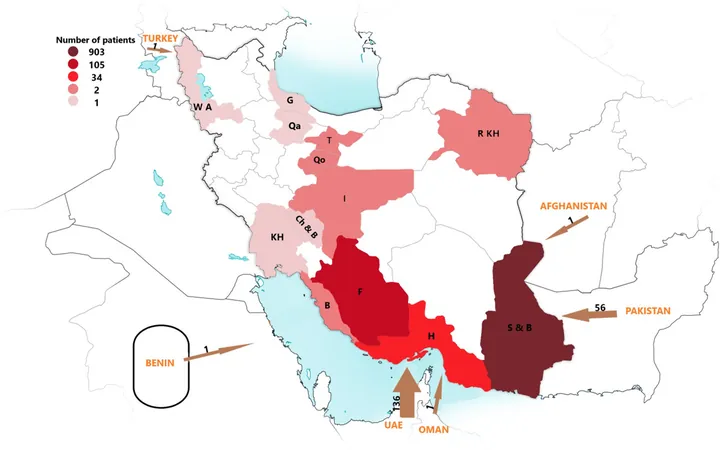
Revolutionary Technique Unveils Stellar Secrets: Mapping 'Polka Dots' on Distant Stars!
2025-08-27
Author: Daniel
Unlocking the Mysteries of Stellar Patterns
NASA scientists are making headlines with an innovative approach to studying the fascinating spots on stars, thanks to the planets that transit across their surfaces. This groundbreaking method, dubbed the "StarryStarryProcess," promises to deepen our understanding of stellar behavior and even the atmospheres of distant worlds.
What is the StarryStarryProcess?
Building on existing transit methods that led to the discovery of over 5,000 exoplanets through missions like TESS and Kepler, the StarryStarryProcess lets astronomers delve deeper into how stars shine. According to Dr. Sabina Sagynbayeva from Stony Brook University, previous models assumed stars were uniform spheres. However, our sun shows us that stars are much more complex, featuring variations that can now be meticulously analyzed.
The Art of Transit Observations
Using the transit method, scientists observe star light curves as exoplanets pass in front of their stars. This process creates a profile of brightness dips which reveal not just the existence of planets but crucial information about their size, distance from the star, and even surface temperatures. Furthermore, as starlight filters through a planet's atmosphere, spectroscopy can unveil the chemical makeup of those atmospheres.
Decoding Star Light Curves: More Than Meets the Eye
Light curves can be deceptive, often showcasing dips caused by more than just transiting planets. These unexpected variations are believed to stem from phenomena known as starspots, similar to sunspots. Interestingly, the number of these starspots fluctuates with solar cycles, offering clues about the star's activity levels.
Feedback Loop of Discovery
By unraveling the secrets of these starspots, astronomers can learn more about the planet itself. Brett Morris from the Space Telescope Science Institute reinforces this connection, explaining that understanding star characteristics enhances our knowledge of the planets orbiting them—especially when searching for indicators of life, such as water in planetary atmospheres.
Testing the New Technique on TOI 3884 b
The team has put the StarryStarryProcess to the test by observing the exoplanet TOI 3884 b, a formidable gas giant located 141 light-years away, discovered by TESS in 2022. Their findings indicate that its parent star displays groups of starspots concentrated at its north pole, leading to a fascinating view of TOI 3884 b’s transits across the star.
The Future: Pandora and Beyond
Currently restricted to observing visible light, the StarryStarryProcess looks forward to new opportunities with the upcoming Pandora satellite that will observe in multiple wavelengths. This could forge new pathways in distinguishing star signals from planetary signals.
A Leap Forward for Exoplanet Science
Allison Youngblood, a NASA project scientist, emphasizes that while TESS has already uncovered thousands of planets, Pandora's focused study of about 20 new worlds will yield a deeper understanding of the cosmic connections that define our universe. Such advancements could revolutionize our comprehension of planetary systems—illuminating not only what lies beyond but also offering insights into our own solar neighborhood.


 Brasil (PT)
Brasil (PT)
 Canada (EN)
Canada (EN)
 Chile (ES)
Chile (ES)
 Česko (CS)
Česko (CS)
 대한민국 (KO)
대한민국 (KO)
 España (ES)
España (ES)
 France (FR)
France (FR)
 Hong Kong (EN)
Hong Kong (EN)
 Italia (IT)
Italia (IT)
 日本 (JA)
日本 (JA)
 Magyarország (HU)
Magyarország (HU)
 Norge (NO)
Norge (NO)
 Polska (PL)
Polska (PL)
 Schweiz (DE)
Schweiz (DE)
 Singapore (EN)
Singapore (EN)
 Sverige (SV)
Sverige (SV)
 Suomi (FI)
Suomi (FI)
 Türkiye (TR)
Türkiye (TR)
 الإمارات العربية المتحدة (AR)
الإمارات العربية المتحدة (AR)